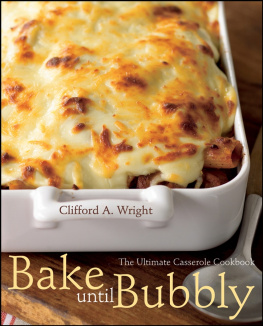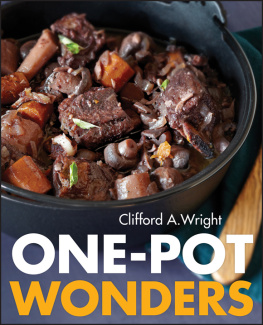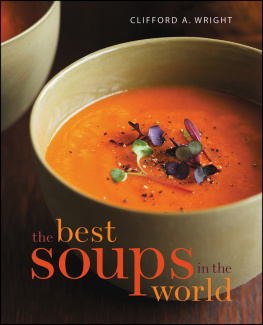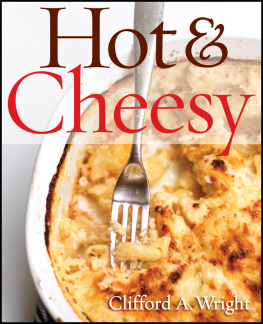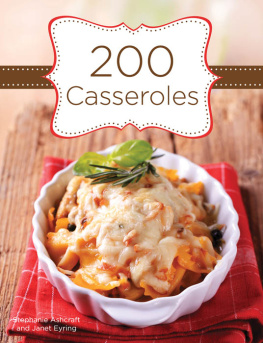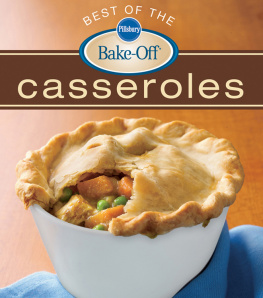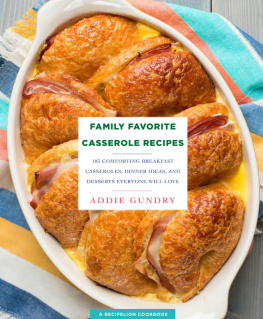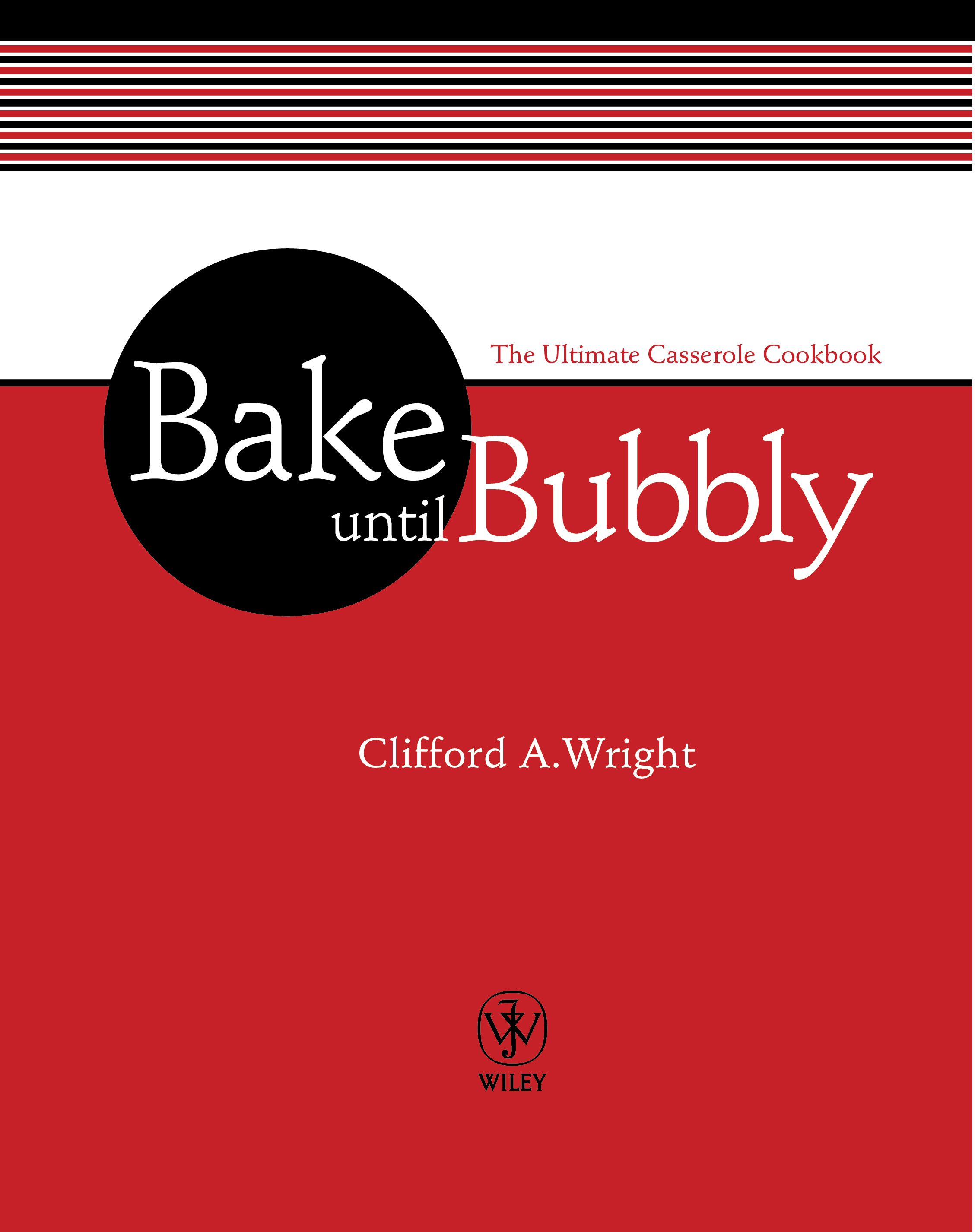
This book is printed on acid-free paper.
Copyright 2008 by Clifford A. Wright. All rights reserved
Published by John Wiley & Sons, Inc., Hoboken, New Jersey
Published simultaneously in Canada
No part of this publication may be reproduced, stored in a retrieval system, or transmitted in any form or by any means, electronic, mechanical, photocopying, recording, scanning, or otherwise, except as permitted under Section 107 or 108 of the 1976 United States Copyright Act, without either the prior written permission of the Publisher, or authorization through payment of the appropriate per-copy fee to the Copyright Clearance Center, Inc., 222 Rosewood Drive, Danvers, MA 01923, (978) 750-8400, fax (978) 646-8600, or on the web at www.copyright.com. Requests to the Publisher for permission should be addressed to the Permissions Department, John Wiley & Sons, Inc., 111 River Street, Hoboken, NJ 07030, (201) 748-6011, fax (201) 748-6008, or online at http://www.wiley.com/go/permissions.
Limit of Liability/Disclaimer of Warranty: While the publisher and author have used their best efforts in preparing this book, they make no representations or warranties with respect to the accuracy or completeness of the contents of this book and specifically disclaim any implied warranties of merchantability or fitness for a particular purpose. No warranty may be created or extended by sales representatives or written sales materials. The advice and strategies contained herein may not be suitable for your situation. You should consult with a professional where appropriate. Neither the publisher nor author shall be liable for any loss of profit or any other commercial damages, including but not limited to special, incidental, consequential, or other damages.
For general information on our other products and services or for technical support, please contact our Customer Care Department within the United States at (800) 762-2974, outside the United States at (317) 572-3993 or fax (317) 572-4002.
Wiley also publishes its books in a variety of electronic formats. Some content that appears in print may not be available in electronic books. For more information about Wiley products, visit our web site at www.wiley.com.
Visit the author at www.cliffordawright.com
Library of Congress Cataloging-in-Publication Data
Wright, Clifford A.
Bake until bubbly : the ultimate casserole cookbook / Clifford A.Wright.
p. cm.
ISBN 978-1-118-06042-1
1. Casserole cookery. 2. One-dish meals. I. Title.
TX693.W73 2008
641.821dc22 2007015966
Printed in the United States of America
10 9 8 7 6 5 4 3 2 1
Also by Clifford A. Wright
On Cooking
A Mediterranean Feast
Cucina Rapida
Cucina Paradiso
Italian Pure & Simple
Lasagne
Little Foods of the Mediterranean
Mediterranean Vegetables
Real Stew
Grill Italian
Some Like it Hot
On Politics and History
Facts and Fables: The Arab-Israeli Conflict
After the Palestine-Israel War: Limits to U.S. and Israeli Policy with Khalil Nakhleh
For Sarah K. Pillsbury,
who helped eat all these casseroles.
Acknowledgements
Making casseroles is easy. But when you're testing casserole recipes that yield six or eight servings, someone's got to eat them (I can't bring myself to throw them away). So I'd like to thank the two people who ate most of these casseroles, my youngest son Seri Kattan-Wright and my friend Sarah Pillsbury. A big thank-you goes to Gretchen Rennell Court, who casually suggested to me to write a book on casseroles after I had told her my then latest book was a stew book. I'd also like to thank my agent Angela Miller, who kept encouraging me; my former agent Doe Coover, who thought of the title; and my editor Justin Schwartz, who skillfully kept my flights of fancy in the casserole.
Introduction
Every home cook who thinks "kids," "family," "crowd," or "party," thinks "casserole." This amazing dish is a favorite of home cooks and it requires only an oven and a casserole. Every mom knows that casseroles are the most versatile preparation for the home cook, and when dad cooks for the kids he can throw some food into a casserole, put it in the oven, and voil, dinner! Everybody who grew up on remembers that bubbling dish brought to the table with its top dappled golden brown, piping hot and inviting. Mom yelled "come and get it" and we did.
My passion for casseroles was born from memories of my childhood and my mother's , thick and rich and gooey and delicious. But once I had three children of my own, casseroles were the solution to many frenzied nights. I was a single father and although I was lucky to have kids who would eat everything and anything, we all loved the simplicity, ease, and satisfaction of a well-baked casserole. It was a dish we could look forward to.
In this book, the casserole recipes range from hidden and delicious treasures from the Old World such as the marvelous , which so wowed a crowd at a party I cooked for that they're still talking about it.
The casserole is a versatile preparation because it's easy to put togetheroften utilizing leftoversand has something for everyone. An appealing attribute of the casserole is its ability to fulfill many purposes: as a family dinner-at-home, an elegant dish for company, a popular dish to bring to a potluck, a surprising leftover, a brunch dish, a next-day appetizer, and a dish to be made for breakfast or dessert. Waking on a Sunday morning to the aroma of coffee, and a breakfast casserole of thick slices of French toast stuffed with chopped Granny Smith apples and cream cheese served with boysenberry sauce, will knock you right out of your slippers (see the recipe). Many of the breakfast casseroles in the book can actually be prepared the night before and plunked into the oven in the morning.
One of my favorite dessert casseroles was the my kids and I made in late August, when our pear tree was groaning from the weight of its luscious orbs ripening and we'd try to beat the squirrels to them. We'd cut them up and arrange them in a casserole with cinnamon and then blanket them with a streusel made of flour, butter, and sugar before baking until bubbly. (Hey, what a great name for a book!)
The versatility of leftovers for casserole is so great that, when my kids were young, they actually asked me to first make a meatloaf, then grill skirt steak and chicken so that we would have leftovers in order to make a casserole (). They were unimpressed when I tried to explain that you use leftovers, you don't make them. Oh well, I was a good dad and would make it from scratch 'cause I loved it too.
My favorite casseroles are Italian-American ones because that's what I grew up on. I fondly remember . And don't forget that surprise guests or friends of the kids coming over for dinner are no problem at all because these casseroles are a menu for six and sometimes more.
Casseroles were invented to be economical and convenient dishes made for large groups of people. They still are. Although you could, you hardly would make a casserole for fewer than four people. In an earlier America, casseroles were called "hot dishes" and they were often associated with church suppers and barn-raisings. Women would often try to outdo each other in providing the tastiest fare, and as a result some wonderful casseroles came into being, often rich in cream and cheese. Many of us grew up on those rich casseroles of white sauce and cheese. Mothers cooked differently then, and today those casseroles based on high-sodium canned or frozen foods loaded with preservatives you can't pronounce are not as appealing. Today we're more concerned with a healthier style of feeding our families. In the olden days , a classic American casserole, was made with frozen broccoli and cream of celery soup. My modern version uses fresh broccoli and natural chicken broth in a luscious dish flavored with Parmesan cheese, sherry, cream, and a touch of curry powder as the bed (divan) for the thinly sliced boneless organic chicken breast.

